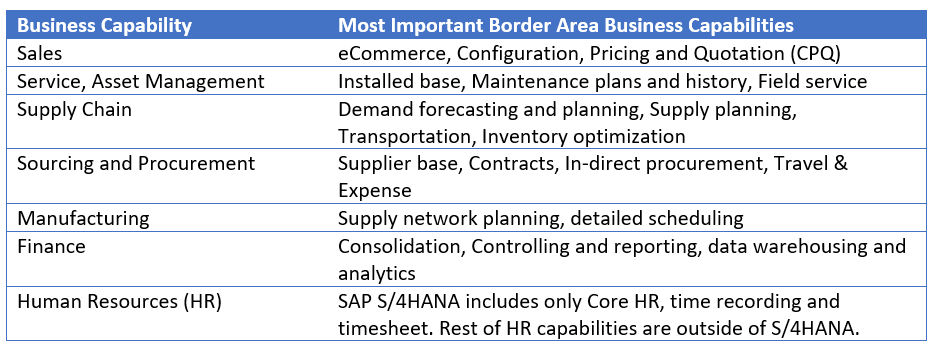There are three important aspects to travelling: you must know where you are going, the travel route must be sensible, and ideally, you should have a good companion.
Tietoevry boosts your S/4HANA journey and by applying the GoField method, ensures the following:
- An ERP architecture for the future, and functionality of the S/4HANA system
- A roadmap to S/4HANA comprising projects of a sensible size
- So we can get going, and in the right direction.
The objective is a future-proof ERP architecture. First, you define which functions will be included in S/4HANA, and which will be obtained through other systems.
The S/4HANA roadmap includes a phased transfer, comprising several smaller projects, from the existing SAP ERP to the desired S/4HANA system. At the same time, you build systems outside S/4HANA. These projects need to be started in time. Together with SAP S/4HANA, external systems often bring clear business benefits, and it makes sense to seek them out as soon as possible.

Perhaps the most important step in the GoField method is getting started. The first step, where you roughly define the 1) current situation, 2) the desired ERP architecture, and 3) create the roadmap in four calendar weeks. The fixed duration ensures that the first step will actually be taken, and the project will get launched.
ERP architecture for the future
The desired ERP architecture must support future business needs. When making decisions on ERP architecture, it is important to understand:
- which capabilities you want to have within S/4HANA
- and which capabilities will be implemented through systems outside S/4HANA
It is often necessary to make changes in both directions in comparison to the current situation. SAP has added functionalities from traditional satellite systems (such as APO, SRM, CRM) to S/4HANA. And, on the other hand, there are cloud-based solutions from SAP and other system providers available for an increasing number of business capabilities. The most important border area business capabilities are:

Border area business capabilities are essential from the point of view of integrations. Different satellite systems (often cloud-based), and S/4HANA as the core, have specific domains. And a rough integration architecture is designed between them.

A capability honeycomb roughly describes the functionalities to be included in S/4HANA (dark blue), the functions that clearly belong outside S/4HANA (white), and functions that need to be analysed on a client-specific basis and are subject to an architecture decision (light blue).
S/4HANA roadmap
The way in which you switch to S/4HANA is one of the most important decisions in the roadmap. The main options are Greenfield, Bluefield and Brownfield. Usually, Bluefield is the most suitable way to migrate.

One of the core objectives of the road map is to find a balance between the rapid and agile development required by business, and the fairly extensive IT system upgrade required by migration to S/4HANA. The balancing is done using three swim lines.
- A new S/4HANA system will be implemented in the SNP Bluefield transition lane. More information about the SNP Bluefield method is available here.
- New S/4HANA functionalities are configured and implemented in the S/4HANA Business Capabilities lane. This takes place simultaneously with the SNP Bluefield project and continues after the introduction of the S/4HANA system.
- Projects based on some other system than S/4HANA will be carried out in the Outside S/4HANA lane.

When the ERP architecture has been defined at the beginning and the roles of the various systems are understood, development can be done in a parallel manner.
The first step – getting started
The first and perhaps most important step in the GoField method is getting started. You roughly analyse the current situation, plan the desired objective and ERP architecture, and create the roadmap during a period of four weeks.

The end result provides the starting point for decision-making and more detailed planning of the S/4HANA project. As well as for possible competitive tendering.
Get in touch with our SAP GoField team and join us on a journey towards S/4HANA. Read more about our SAP S/4HANA Transformation Services.
Join the SAP GO community
Accelerate your transformation journey by joining the community and we'll keep you updated.
Join now!